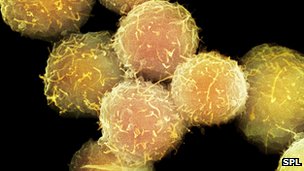
|
|
 |
|||||||||
| |||||||||
|
"Внутренние часы" тела можно повернуть вспять, доказали исследователи
Если этот процесс усовершенствовать, на свет появятся уникальные методики лечения, например, сердечного приступа или осложнений беременности, связанных с неправильным развитием плаценты. Тело само будет себя восстанавливать. Правда, есть одно "но": после манипуляций в организме лабораторных животных начали образовываться опухоли. То есть процесс "омоложения" привел к неприятным последствиям. Следовательно, требуется больше контроля над ситуацией. Ранее ученым удавалось вернуть ткани на эмбриональную стадию развития, но только в лаборатории с использованием образцов кожи, смеси химических соединений или генетических манипуляций. Испанские специалисты пошли дальше, обратившись к экспериментам с грызунами, получив тот же результат в теле. Они создали генетически модифицированных грызунов, у которых начиналась выработка четырех химических соединений, влиявших на качество ткани, после введения особого препарата. Это позволило повернуть "внутренние часы" вспять значительнее, чем любая другая клеточная технология, включая эмбриональные стволовые клетки. Stem cells: Living adult tissue transformed back into embryo stateBy James GallagherHealth and science reporter, BBC News  Stem cells can become any tissue type in the body Stem cells can become any tissue type in the bodyContinue reading the main story
Related StoriesThe living tissue inside an animal has been regressed back into an embryonic state for the first time, Spanish researchers say. They believe it could lead to new ways of repairing the body, for example after a heart attack. However, the study published in the journal Nature, showed the technique led to tumours forming in mice. Stem cell experts said it was a "cool" study, but would need to be much more controlled before leading to therapies. When an egg is first fertilised, it has the potential to develop into every tissue in the human body, from brain cells to skin. That flexibility is lost as an embryo develops. However, transforming adult tissues back into an embryonic-like state may lead to treatments that can regenerate a weakened heart, or the light-sensing cells in the eye or even the brain after a stroke. 'Thought impossible' The transformation has been done in a laboratory, by treating skin samples with a mix of chemicals or genetic modification. Continue reading the main story
"Start QuoteProf Robin AliInstitute of Ophthalmology Now scientists at the Spanish National Cancer Research Centre in Madrid have achieved the same results inside an animal. "It is a surprising result, this was not expected, most of us thought that it would be impossible," lead researcher Prof Manuel Serrano told the BBC. The research group used mice genetically modified to switch on, when they were given a specific drug, production of four chemicals shown to reverse a tissue's destiny in the laboratory. Tissues were successfully transformed back into an embryonic state, but without further direction they rapidly developed into tumours. Speaking on Science In Action on the BBC World Service, Prof Serrano said: "Of course this is not what we want for regenerative medicine. "We want to turn back the clock in a controlled manner and this is something we have to work out in the future. "We have to find conditions where we reprogramme only partially so that they acquire a plastic state and repair the tissue." 'Monumental task' Prof Robin Ali, from the Institute of Ophthalmology in London, is using stem cell technology to rebuild the retina to restore sight. He said the "ultimate goal" would be some treatment that could regenerate the back of the eye, "but that is a long way off". He added: "This is a really elegant study with important implications for the field. "It will be a monumental task to prove this is safe, as what you're doing is innately dangerous, but it is exciting as it's potentially a new strategy for regenerative medicine." Continue reading the main story
"Start QuoteProf Chris MasonUniversity College London The technique was able to turn the clock back further than any other stem cell technology, including stem cells taken from an embryo. Previous techniques produce stem cells that make the tissues found in the body. This study could also make those needed to support an embryo in the womb, such as the placenta. Prof Robin Lovell-Badge, from the MRC's National Institute of Medical Research, told the BBC that he could not see this technique leading directly to therapies, but rather improving scientific understanding. "To me the interesting thing was the evidence that the cells correspond to an earlier stage of development. "If we can repeat that with human cells, it would be incredibly useful and could have important research implications, such as understanding the placenta and how to help maintain a pregnancy." Prof Chris Mason, a stem cell scientist at University College London, said: "Overall it's very cool and potentially very exciting, but it has massive issues in terms of control." Instead he thought techniques that transformed cells in the body directly into the desired tissue would be better than going via stem cells. "It's like a tree, instead of going down from a branch to the root and back up to a different branch, maybe we'll be able to jump from branch to branch."
|
Дизайн и поддержка: Interface Ltd. |
|